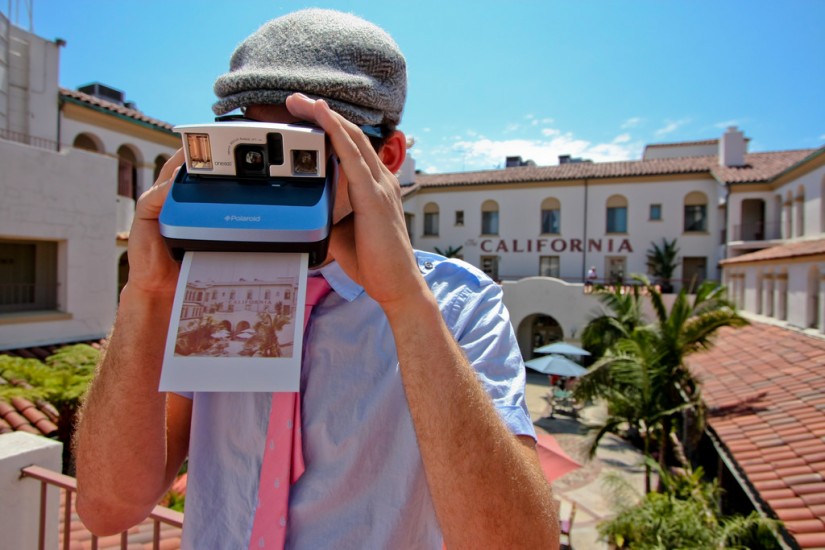I used to prowl Goodwill and garage sales for old Polaroid cameras as a kid. The film was expensive, and often the cameras needed small repairs and ample cleaning. But there was something charming about the rickety, toylike cameras. Half the time, the old film and slightly busted camera yielded fuzzy, oddly colored photos. The rest of the time, the cameras delivered tiny, perfect works of art. Either way, they were worthy of framing — or, at the very least, securing to the refrigerator.
So when I stepped into Polaroid’s booth in Las Vegas at the Consumer Electronics Showcase in January and was greeted by a giant, room-size version of its new throwback instant-print camera, I struggled to contain my 11-year-old self’s enthusiasm. Standing front and center was a nearly 6-foot-tall re-creation of Polaroid’s latest release, the OneStep 2. The original OneStep was released in 1977, and it was the company’s first one-click camera. It had a single button and a motor that would spit out your photo. While it was far from Polaroid’s first camera, it was the one with which the brand became synonymous. One take, one click, one photo.
Polaroid’s homage to its past didn’t end with the enormous (nonfunctional; I asked) OneStep 2. Wandering inside the company’s setup at CES was like stepping into an Instagram playground from the past. Instead of using iPhones, everyone was shooting with OneStep 2s, and the photos were backdropped by bold and brightly colored patterns. Massive renditions of Polaroid prints with that iconic white frame hung above us; every primary color washed over the space. For a moment, it seemed like everyone was content to forget the phones shoved in their back pockets; the cameras, with their whirring motors and the photos they spit out, were more captivating.
In an age when Instagram has altered the photography world, instant-print cameras are conquering the digital era. Sales of DSLRs and point-and-shoot digital cameras are down; high-end cameras with interchangeable lens devices saw only a small uptick last year, failing to reach the growth of previous years. Broadly, iPhones satiate the average user interested in digital photography. Yet the instant-print shooter—the lowest-tech camera available—has won over many. It’s projected that the market will reach $1.8 billion in revenue within the next three years.
